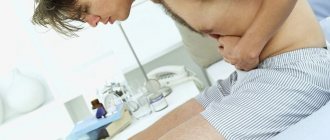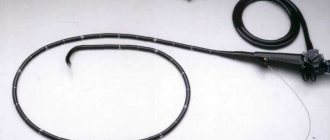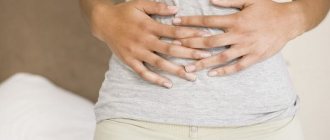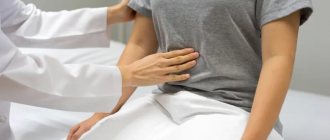Assignment of a disability group for Crohn's disease or ulcerative colitis guarantees support from the state, social payments and benefits. But what should you do if, for some reason, at the next scheduled inspection, the commission made a negative decision and canceled the document? Is it possible to challenge the ITU ruling and achieve the opposite result? Today's material by Kronkolit is devoted to these difficult and relevant topics.
Is there any disability for Crohn's disease?
Crohn's disease (CD) is classified as a chronic pathology of the gastrointestinal tract. This disease mainly affects the small and large intestines, but there are known cases of lesions in other parts of the gastrointestinal tract. The prognosis for patients with CD is obviously unfavorable in terms of complete recovery, however, in medical practice there have been cases when, after the onset of the disease and the onset of remission, there were no relapses.
After diagnosis, patients have reason to apply for a medical and social examination (MSE) in order to assign a disability group. It is advisable to do this no earlier than 6 months from the date of diagnosis. Experts will be able to determine the severity of the pathology and make a decision in favor of the applicant after assessing the effectiveness of basic treatment.
Provided that the disease is mild, that is, if a calm state is achieved without the use of steroidal anti-inflammatory drugs, which indicates persistent but minor dysfunctions of the intestinal tract, the assignment of disability will most likely be denied.
Moderate and severe conditions with Crohn's disease are a direct indication for issuing the appropriate status to the patient. Prevalence, frequency of repetition, aggressive therapy - all this together leads to persistent and severe disorders of the digestive system, abnormal metabolism, uncontrolled weight loss and other complications. These factors affect the quality of life and limit the patient’s ability to learn, move, and self-care. If the relevant certificates are available, the commission experts make a positive decision, and in the future the patient with CD has the right to social benefits. support and payments from the state.
Losing disability, losing health
Unfortunately, there are difficulties not only with diagnosis. Since the cause of IBD is unknown, there is currently no definitive treatment. And the anti-inflammatory therapy that is used is long-term, often lifelong and very expensive (one ampoule of a genetically engineered drug costs about 50 thousand rubles, and an annual course of treatment requires about one million rubles). Treatment costs for IBD are covered by insurance in most countries.
Today, patients with IBD are prescribed various medications, the effectiveness of which is clearly insufficient. For severe forms of diseases, hormonal drugs are mainly used, the use of which is accompanied by a large number of side effects, and 40% of patients develop either hormone resistance or hormone dependence. The use of long courses of hormonal therapy in a large percentage of cases ends in the need for surgical intervention. Therefore, most doctors believe that the use of hormonal drugs for longer than three months is inappropriate.
There is noise and commotion in the stomach. Who is at risk for Crohn's disease and how to deal with it
More details
Much less often than throughout the world, Russian patients with IBD receive treatment with genetically engineered biological drugs. Unfortunately, even these expensive medications are not a panacea, and in some cases surgery cannot be avoided. Nevertheless, biological drugs are today considered the most advanced and effective in the treatment of IBD.
Article on the topic
Bacteria are man's friend! What microbes help the body?
In addition, Russian patients with IBD have a very big problem that does not yet have a solution. It is because of this that treatment cannot be truly effective, despite any medications. The situation is such that almost 90% of IBD patients receiving medications in our country have disabilities and receive free treatment under the federal ONLS program (only for disabled people). Only a few people have the opportunity to pay for very expensive treatment on their own. Unfortunately, today it is impossible to receive free medications without a disability. Once an improvement has been achieved, and even more so, a stable remission, disability from patients is often removed, since the patient’s good health and appearance, normal test results and the absence of symptoms for the structures causing disability are convincing and sufficient evidence that the patient has recovered. Unfortunately, it is not. The whole point of the problem is that the huge amount of money that was spent on achieving remission is wasted, because as soon as people lose their disability, they stop taking their medications, which within a short time leads to a new exacerbation, complications and surgery. It turns out to be a paradox - to be healthy, you need to remain disabled. This problem needs to be solved first, because otherwise the very meaning of treatment, the purpose of which is to avoid disability and preserve young people’s ability to work, is lost.
Article on the topic
The gastrointestinal tract is protected. What medications will help with digestive problems?
When is disability assigned for ulcerative colitis?
Ulcerative colitis (UC) is a chronic disorder of the gastrointestinal tract, in which inflammatory processes, as in Crohn's disease, are often localized in the colon. The etiology and pathogenesis of the disease have not been established. The prognosis for its diagnosis is always serious.
Ulcerative colitis, or nonspecific ulcerative colitis (UC) proceeds according to the principle of other immunopathological disorders and is primarily chronic. You can get disability due to ulcerative colitis if the pathology is severe. It is possible to determine in what form the disease occurs by assessing the effectiveness of therapeutic tactics, therefore, with the issue of registering disability, you should contact the ITU after six months from the start of treatment. Patients with UC are not assigned a disability group in all cases.
In mild forms, gastrointestinal dysfunction is insignificant. In fact, they do not pose a serious threat to life and activity and are not regarded by the commission’s experts as critical, in contrast to the moderate and severe course of UC. Patients with persistent disorders of the gastrointestinal tract due to ulcerative colitis of the intestine are assigned a disability.
Is it worth filing for disability?
Partial or complete loss of ability to work is a good reason to seek government support. The process of registering disability is difficult and lengthy. However, having overcome all difficulties, people with disabilities can count not only on financial assistance, but also on other benefits.
Thus, disability for Crohn's disease and ulcerative colitis, if assigned group I, guarantees:
- Free travel on certain types of public transport (including to the place of medical care);
- Free receipt of medications according to a doctor’s prescription (this list includes medical instruments, medications, dressings, etc.);
- Annual vouchers for sanitary-resort treatment (the state issues tickets three years after receiving disability);
- Dental treatment and prosthetics (costs are covered from the budget);
- Non-participation in competitions for admission to educational institutions;
- Increased scholarship for students.
For group II, all of the above methods of social support are provided, including:
- Free provision of orthopedic devices;
- 35-hour work week with full salary;
- Up to 60 days of vacation annually (at your own expense).
For citizens with group III the following are provided:
- 50 percent discounts on intercity transport services from the beginning of October to May 15.
- Discounts on some medications (up to half the cost for people with unemployed status);
- Benefits for purchasing necessary medical equipment.
Whether to register a disability is an individual question. But, as practice shows, when there is a clear need, the state does, to the best of its ability, provide assistance and support to people with disabilities.
Do citizens from the described groups receive disability pensions? Absolutely yes. The corresponding category is entitled to material support in the form of pensions, which is received by all persons living in the country. If you wish, you can refuse the benefits offered by the state, and instead purchase additional monthly payments.
Disability due to other diseases of the digestive system
In addition to CD and UC, there are other serious pathologies of the gastrointestinal tract that require regular and long-term treatment. Any significant disorders of the digestive system, whether autoimmune or not, require a serious approach to treatment, close monitoring by medical professionals and attention from the authorities that regulate the support of seriously ill Russian citizens. Such pathologies include:
- Disaccharidase deficiency;
- Lactase deficiency;
- Gastritis;
- Gastroduodenitis;
- Cholecystitis;
- Pancreatitis, etc.
In all of these cases, it is advisable to talk about the formed digestive insufficiency syndrome. Disability results from diagnosed and confirmed persistent metabolic disorders, developmental delays in children (both physical and psychomotor), which have not been relieved 8 months after the start of the therapeutic process.
Effective domestic mesalazine in the treatment of ulcerative colitis
Ulcerative colitis (UC) is a chronic autoimmune disease and is characterized by erosive and ulcerative lesions of the colon mucosa (COMC). In the pathogenesis of UC, activation of opportunistic microflora and reduction of the barrier function of SOTK play an important role. The resulting microbial antigens interact with the intestinal immune system, activate T and B lymphocytes and initiate the synthesis of autoantibodies. A major role in the development of inflammation in inflammatory bowel diseases (IBD) belongs to pro-inflammatory cytokines: tumor necrosis factor alpha (TNF-α), interleukins (IL) 1β, 12β, 17, 23, etc., causing damage to the cellular tissue. Genetic predisposition increases the risk of developing UC several times. 168 gene loci leading to the development of UC and Crohn's disease (CD) are already known. On this basis, attempts are being made to create diagnostic panels for IBD [1].
The incidence of IBD in northern European countries and North America has increased approximately 6-fold over the past 40 years. The peak incidence occurs between 20 and 30 years of age; both men and women are equally affected. According to the latest epidemiological surveys, the prevalence of UC on average reaches 500 cases per 100 thousand population [2].
The social significance of UC is due to its predominant distribution among young people, its chronic progressive course, the need for frequent hospital treatment, the development of systemic extraintestinal manifestations, and a decrease in working capacity and quality of life. In 25–37%, the course of UC in the first 5 years is accompanied by intestinal bleeding, perforation, toxic megacolon and other severe complications requiring surgical intervention [3, 4].
Drug therapy for UC is carried out according to the recommendations of the European Consensus (European Crohn's Colitis Organization, ECCO) 2022 [5]. In our country, clinical recommendations of the Russian Gastroenterological Association and the Russian Association of Coloproctologists for the diagnosis and treatment of UC and CD are used [6, 7]. Treatment tactics depend on the prevalence of inflammation in the colon, the severity of the attack, the presence of extraintestinal manifestations and complications.
The first-line drug for the treatment of UC is mesalazine or 5-aminosalicylic acid (5-ASA) [8]. The mechanism of action of 5-ASA is to inhibit the metabolism of arachidonic acid, inflammatory mediators, primarily leukotrienes and pro-inflammatory interleukins, neutralize free oxygen radicals and suppress the production of antibodies by B lymphocytes. In severe cases of UC, glucocorticosteroids and genetically engineered biological drugs (GEBPs) are used. When a positive response is achieved, glucocorticosteroids are gradually discontinued and the patient is transferred to 5-ASA drugs to induce and maintain remission. In case of ineffectiveness of hormonal therapy, biologically active drugs are used.
Currently, the government of the Russian Federation has set pharmaceutical companies the task of creating domestic modern drugs that will solve the problem of completely replacing imported drugs. The first domestic drug of mesalazine, Kansalazine, appeared in Russia.
In its structure, the Cansalazine tablet is a polymer matrix with mesalazine, which provides long-term continuous release of the active substance throughout the gastrointestinal tract from the duodenum to the rectum, regardless of pH values.
The purpose of this work is to study the clinical effectiveness of the drug Cansalazine in patients with mild to moderate UC in the acute phase through an open prospective clinical non-comparative study.
The objectives of the study were: a) to determine the effectiveness of Cansalazine in stopping the acute phase of inflammation; b) achieving stable positive dynamics during ulcerative colitis; c) assessment of the frequency of side effects (headache, nausea, effect on hematopoiesis, hepatotoxicity, allergic reactions).
Material and research methods
The study included 31 patients with UC. Men and women met with equal frequency. The average age of the patients was 39 ± 7.5 years (18–60 years). The duration of the disease ranged from 6 months to 5 years and averaged 3.4 ± 1.6 years.
The criteria for inclusion in the study were: patients with mild to moderate UC aged 18–60 years, a verified diagnosis of “ulcerative colitis, chronically relapsing course, acute stage, mild or moderate severity, form: proctosigmoiditis, left-sided ulcerative colitis” (confirmed by clinical laboratory and instrumental studies), written consent for inclusion in the study.
Exclusion criteria: patient age under 18 and over 60 years; diagnosis of "Crohn's disease, gastric and duodenal ulcers" in the anamnesis, blood diseases, pregnancy, lactation, burdened allergic history, drug intolerance, salicylate intolerance, acute infectious disease, chronic diseases of the cardiovascular, neuroendocrine systems, renal, liver failure, oncological history of diseases, taking medications that have a pronounced effect on hemodynamics, liver function, taking immunosuppressants for 3 months or systemic glucocorticosteroids for 1 month before inclusion in the study, drug addiction, alcoholism, smoking more than 10 cigarettes per day, taking systemic antibiotics for treatment of nonspecific ulcerative colitis for 7 days before the study, treatment with probiotics, antidiarrheal drugs for 7 days before the study.
The extent of lesions in UC was assessed according to the Montreal classification. They distinguished: a) proctitis (inflammation limited to the rectum); b) left-sided colitis - spread of inflammation to the left flexure of the colon (including proctosigmoiditis); c) total and subtotal UC - total UC with retrograde ileitis.
The severity of the UC attack was determined using the Mayo index, which includes clinical manifestations, endoscopic changes in the UC and the general condition of the patient (Table 1). Mayo index values were interpreted as 0–1 point—remission of UC; 2–5 points – minimal activity; 6–9 points – moderate activity; 10–12 points – high activity.
Endoscopic changes included in the Mayo index were assessed using the Schroeder scale (Table 2).
The design of the examination included clinical tests with determination of C-reactive protein (CRP), colonoscopy (CS) with histological examination of biopsy specimens.
In addition, IL-1β, IL-4, TNF-α were determined in blood serum. The concentration of calprotectin was examined in feces. Fecal calprotectin (FCP) is produced by polymorphonuclear non-neutrophils and can serve as a marker of inflammation in the intestine [10]. An enzyme-linked immunosorbent assay was used to study IL and FCP.
Among the examined patients, patients with left-sided UC predominated (20 patients - 64.5%). 10 patients (32.4%) had total UC and 1 patient (3.2%) had UC in the form of proctitis. In table Figure 3 shows the distribution of patients according to the degree of inflammation depending on the location of ulcerative colitis.
From the table Table 3 shows that in the study group, UC of moderate severity predominated - 23 patients (73.4%) and only 8 (26.6%) had minimal activity of autoimmune inflammation.
Patients with left-sided or total UC of moderate severity complained of diarrhea up to 5–6 times a day, during the day and at night, mixed with scarlet blood, urgency, tenesmus, low-grade fever in the evenings, weakness, decreased ability to work, and weight loss by 2–3 kg. Half of the patients had systemic extraintestinal manifestations: peripheral arthropathy, and one had aphthous stomatitis. Colonofibroscopy revealed ulcerative colitis of moderate activity (the mucosa is hyperemic, granular, edematous, with multiple superficial erosions, microabscesses, single ulcers covered with fibrin. Contact bleeding is insignificant. The folding is moderately smoothed. There is no vascular pattern, which corresponded to 2 points on the Schroeder scale (Fig. . 1).
A histological examination of SBTC biopsies revealed lymphoplasmacytic infiltration of the lamina propria, deformation of the crypts, and a decrease in the number of goblet cells (Fig. 2).
Clinical blood tests confirmed iron deficiency anemia (HB 95 ± 5 g/l, serum iron 7.1 ± 3.2 μmol/l), moderate leukocytosis up to 12 ± 1.6 thousand with a band shift up to 13 ± 2%, ESR 27 ± 6 mm/hour; increase in CRP to 9 ± 2 mg/l. Moderate hypoproteinemia was also noted (total protein 63 ± 2 g/l when the norm was over 67 g/l) with an albumin level of 33 ± 1 g/l. All patients had an increase in TNF-α (98.4 ± 13.6 pg/ml), IL-1β (81.9 ± 7.5 pg/ml with a normal value of up to 50 pg/ml) and a decrease in IL-4 to 36 .7 ± 2.2 pg/ml (normal 50 pg/ml). In stool tests, a positive reaction to occult blood was observed, and the FCP on average reached 540 ± 150 μg/g (the norm is up to 50 μg/g). As a result, the UC activity index on the Mayo scale was 7 ± 1 point.
The study group also included a patient with UC in the form of catarrhal-hemorrhagic proctitis of moderate severity, who had no effect from treatment with rectal microenemas of mesalazine.
In 26.4% of patients with UC with total or left-sided lesions of minimal activity, the frequency of loose stools did not exceed 3-4 times a day, but with streaks of blood and urgency. Body temperature remained within normal limits, weight loss was not noted, or it did not exceed 1 kg. Clinical blood tests showed no inflammatory changes (CRP ≤ 5 mg/L), iron deficiency anemia was limited to mild severity (HB 110 ± 8 g/L, serum iron 9 ± 1 μmol/L). In the stool analysis, a positive reaction to occult blood was noted, the FCP increased to an average of 360 ± 50 μg/g. Levels of TNF-α and IL-1β were elevated in all patients and averaged 87.3 ± 11.4 pg/ml and 78.9 ± 13.5 pg/ml, respectively. IL-4 levels decreased to an average of 35.7 ± 1.4 pg/ml.
One third of the patients in this group had peripheral arthropathy in the form of intermittent pain in large joints. When performing colonofibroscopy, signs of catarrhal-hemorrhagic colitis were observed with slight contact vulnerability of the somatic tissue and the absence of a vascular pattern, which corresponded to 2 points on the Schroeder scale. Histological examination showed slight lymphoplasmacytic infiltration and a decrease in the number of goblet cells. The UC activity index in patients in this group was 4 ± 1 points according to Mayo.
All patients included in the study were prescribed the drug Cansalazine orally in tablets, at a dose of 3 g/day (2 tablets × 3 times a day), as well as rectally - in microenemas in the form of a suspension, 2 g, at night. Also, all patients received antibacterial therapy in the form of infusions of metronidazole 1500 mg/day.
The safety and tolerability of Cansalazine were assessed by dynamic monitoring of clinical symptoms of UC and the possible development of adverse events (nausea, headache, etc.); using laboratory parameters, including the study of alanine and aspartic aminotransferases and other liver tests.
All studies were performed before treatment was prescribed; control clinical tests were carried out on the 15th and 30th days of therapy. Repeated colonofibroscopy was performed a month after the start of treatment.
Statistical analysis was performed using Microsoft® Office Excel 2003; Statisticav. 6.0; Primerof Biostatistics Version 4.03 by StantonA. Glantz 1998. Student's t-test was used to determine the significance of differences between means in normally distributed populations.
Research results
Positive dynamics were observed by the end of the 2nd week of taking the drug Cansalazine. In all patients, the frequency of stool decreased, the admixture of blood in the stool disappeared, and tenesmus stopped. Blood tests showed a decrease in the level of leukocytes and band shift, ESR, and CRP level. After 30 days from the start of therapy, in all patients with UC, regardless of the severity of inflammation and the localization of the process, the frequency of stools decreased to 1–2 times a day, the admixture of blood in the stool, tenesmus and urgency disappeared. In clinical blood tests, all parameters returned to normal. PCF values decreased to 260 ± 38 μg/g. With an average degree of UC activity, the cytokine profile improved: the TNF-α index decreased from 98.4 ± 13.6 pg/ml to 63.4 ± 10.5 pg/ml (p < 0.05); IL-1β decreased from 81.9 ± 7.5 pg/ml to 40.1 ± 1.5 pg/ml (p < 0.05); IL-4 values increased from 36.7 ± 2.2 pg/ml to 43.8 ± 1.8 pg/ml (p < 0.05) (Fig. 3). In patients with an average degree of activity of UC, the endoscopic index according to Schroeder decreased to 1 point (the mucosa is pale pink, smooth, shiny, with single small pseudopolyps; there is no contact bleeding; folding is pronounced; the vascular pattern is preserved, rebuilt) - incomplete remission of ulcerative colitis (Fig. . 4).
Histological examination revealed a slight lymphoplasmacytic infiltration, the number of goblet cells remained reduced, and the shape of the crypts improved (Fig. 5). The clinical activity index on the Mayo scale averaged 3 ± 1 point.
In patients with mild UC, during colonofibroscopy, there were no signs of inflammation of the vascular system, but areas of a blurred vascular pattern remained. A histological examination revealed signs of minimal colitis, in the form of moderate lymphoplasmacytic infiltration of the somatic tissue, and a decrease in the number of goblet cells. The clinical activity index on the Mayo scale did not exceed 1 point. FCP remained elevated and averaged 240 ± 24 μg/g. The levels of pro-inflammatory cytokines decreased (TNF-α level decreased from 87.3 ± 11.4 pg/ml to 57.3 ± 9.5 pg/ml (p < 0.05); IL-1β level decreased from 78.9 ± 13.5 pg/ml to 45.3 ± 2.5 pg/ml (p < 0.05)) and the level of anti-inflammatory cytokine increased - IL-4 increased from 35.7 ± 1.4 pg/ml to 45.8 ± 2.3 pg/ml (p < 0.05) (Fig. 6). As inflammation of the colon mucosa subsided, extraintestinal manifestations of UC disappeared in patients: peripheral arthropathy and aphthous stomatitis.
Thus, all patients achieved a significant positive effect from Cansalazine in relieving the acute phase of UC.
Side effects: one patient with UC with left-sided lesions and a moderate degree of activity developed nausea and vomiting on the 3rd day of treatment with Cansalazine. The drug was discontinued and the patient was excluded from the study. Nausea and vomiting stopped within 24 hours without prescribing additional drug therapy. According to the classification, the severity of the described side effects was assessed as moderate, i.e. the complications affected daily activity, but did not lead to a permanent loss of work activity and resolved on their own without additional therapy.
Discussion
According to the data obtained, the drug Cansalazine (the active substance is mesalazine), when prescribed to patients with UC at a dose of 3 g per day for 1 month, proved its effectiveness: 96.7% of patients experienced clinical and endoscopic remission with the restoration of laboratory parameters characteristic of inflammation to normal. In all patients, during repeated histological examinations of the biopsy specimens of the STC, lymphoplasmacytic infiltration remained, but to a lesser extent. The persistence of autoimmune inflammation of SOTC was confirmed by a moderate increase in the concentration of PCP and an altered profile, primarily of TNF-α and IL-4.
All patients tolerated therapy with Cansalazine well, no allergic reactions were noted. Side effects of the drug were recorded in 1 patient in the form of nausea and vomiting, which completely resolved after discontinuation of the drug.
When analyzing laboratory blood parameters throughout the entire course of treatment, in no case were changes in liver tests recorded, which indicates the absence of Cansalazine hepatotoxicity. After completion of the clinical trial, all patients were recommended to maintain remission of UC with maintenance therapy with Cansalazine at a dose of 3 g per day in combination with local therapy under the supervision of a gastroenterologist.
Consequently, the domestic drug Kansalazine has a pronounced anti-inflammatory effect in patients with mild and moderate UC, not inferior in effectiveness to foreign analogues.
Conclusion
In 96.7% of patients with mild and moderate UC, clear positive dynamics were achieved as a result of taking Cansalazine for 1 month at a dose of 3 g/day.
Cansalazine has a pronounced anti-inflammatory effect in patients with UC, stops the acute attack of the disease and promotes the development of remission of the disease.
Side effects in the form of nausea and vomiting were recorded in 1 patient with UC with a left-sided lesion of moderate activity, and therefore the patient was transferred to another form of mesalazine.
Thus, the domestic drug Cansalazine can be recommended for the treatment of mild and moderate UC both during exacerbation and for maintaining remission.
Literature
- Jostins L., Ripke S., Weersma RK et al. Host-microbe interactions have shaped the genetic architecture of inflammatory bowel disease // Nature. 2012; 491:119–124.
- Molodecky NA, Soon IS, Rabi DM, Ghali WA, Ferris M., Chernoff G., Benchimol EI, Panaccione R., Ghosh S., Barkema HW, Kaplan GG Increasing incidence and prevalence of the inflammatory bowel diseases with time, based on systematic review // Gastroenterology. 2012; 142:46–54.
- Shelygin Yu. A., Blagodarny L. A. Handbook of coloproctology. M.: Publishing house "Litterra", 2014. pp. 460–522.
- Langholz E., Munkholm P., Davidsen M., Binder V. Course of ulcerative colitis: analysis of changes in disease activity over years // Gastroenterology. 1994. Vol. 107. P. 3–11.
- Magro F., Gionchetti P., Eliakim R., Ardizzone S., Armuzzi A., de Acosta MB, Burisch J., Gecse KB, Hart AL, Hindryckx P., Langner C., Limdi JK, Pellino G., Zagurowicz E., Raine T., Harbord M., Rieder F. For the European Crohn's and Colitis Organization // Journal of Crohn's and Colitis. 2022, 649–670. DOI: 10.1093/ecco-jcc/jjx008.
- Clinical recommendations of the Russian Gastroenterological Association and the Association of Coloproctologists in Russia for the diagnosis and treatment of ulcerative colitis // Coloproctology. 2022, No. 1 (59).
- Khatkov I. E., Parfenov A. I., Knyazev O. V., Mikhailyants G. S., Atroshchenko A. O., Ruchkina I. N. Inflammatory bowel diseases in the practice of a therapist and surgeon. M.: VITA Press, 2022. pp. 12–50.
- Li W., Zhang ZM, Jiang XL Once daily vs multiple daily mesalazine therapy for mild to moderate ulcerative colitis: a meta-analysis // Colorectal Dis. 2016, Jul; 18(7):O214–223. DOI: 10.1111/codi.13393.
- Schroeder KW, Tremaine WJ, Ilstrup DM Coated oral 5-aminosalicylic acid therapy for mildly to moderately active ulcerative colitis. A randomized study // N. Engl. J. Med. 1987; 317:1625–1629.
- Moein S., Qujeq D., Tabari MV, Kashifard M., Hajiantilaki K. Diagnostic accuracy of fecal calprotectin in assessing the severity of inflammatory bowel disease: From laboratory to clinic // Caspian J Intern Med. 2017; 8 (3): 178–182. DOI: 10.22088/cjim.8.3.178.
I. N. Ruchkina, Doctor of Medical Sciences O. V. Knyazev, Doctor of Medical Sciences I. E. Trubitsyna, Doctor of Medical Sciences N. A. Fadeeva, Candidate of Medical Sciences E. A. Dobrolyubova S. V. Belousov S. G. Khomeriki, Doctor of Medical Sciences, Professor A. I. Parfenov1, Doctor of Medical Sciences, Professor
GBUZ MKSC im. A. S. Loginova DZM, Moscow
1 Contact information
Effective domestic mesalazine in the treatment of ulcerative colitis / I. N. Ruchkina, O. V. Knyazev, I. E. Trubitsyna, N. A. Fadeeva, E. A. Dobrolyubova, S. V. Belousov., S. G. Khomeriki , A. I. Parfenov
For citation: Attending physician No. 2/2018; Page numbers in the issue: 32-37 Tags: intestinal diseases, inflammation, exacerbation
Can a permanent disability group be removed?
ITU practices two scenarios in which “disability is removed.” In the first case, such a decision by the commission can be expected if an error was made in the documents provided for review by the group of experts. In the second, when a person with disabilities began to feel better as a result of treatment.
The reason for depriving a disability group may be a re-evaluation by the Ministry of Health of the criteria according to which the category was previously assigned.
The status can also be canceled at the initiative of the attending physician if, based on the results of successful treatment, he issues a referral to the patient for re-examination.
Group 3 is more often removed, while category 1 disabled people with serious functional deviations recover in rare cases. The law provides for a clause according to which a disabled person can independently initiate the process of canceling his status (sometimes this is done for employment purposes).
How to apply for disability
To register a disability group, you must:
- Receive a referral to undergo an MSE (medical and social examination).
To do this, you need to contact your attending gastroenterologist with a request to conduct a full examination with the assistance of specialists from another field. Upon completion of the procedures, the medical organization responsible for the process issues a referral. This document must bear the seal of the chief physician.
Afterwards, the referral is submitted for consideration to the ITU commission. Two types of submission are possible: electronic or paper.
Important: in some cases, patients with IBD may face a refusal to issue the appropriate examination necessary to pass the next stage (at the ITU). In such situations, you should, instead of a verbal refusal, request a written one, and then independently contact the commission staff, who will conduct an independent investigation and determine whether there is a need to organize a full-fledged medical and social examination.
If the referral for MSE is issued by the department providing pension payments, together with the social protection authorities of citizens, the applicant for the assignment of a document confirming disability must provide these organizations with certificates proving the severity of the disease, as a result of which there is a need for state support.
- Contact the ITU office for further examination.
You can make a request both at your place of residence and at your actual place of stay. To do this, you must have an application and an identity document (passport).
- Visit ITU for examination.
During the examination, medical experts from the bureau will work with you, who will familiarize themselves with the provided documents and medical reports, and will also make a comprehensive analysis of your health status: they will establish indicators of social, clinical, functional, and psychological data, and examine professional and labor characteristics. In the process, commission employees will follow the criteria established by the Ministry of Labor and Social Protection of the Russian Federation.
If necessary, ITU will issue a referral for other studies. Patients with ulcerative colitis and Crohn's disease may not want additional procedures. In this case, whether they will receive disability will depend on the decision of the commission, which will be announced by experts, based only on the data provided by the applicant. Refusal to refer will be recorded in the ITU protocol.
Obtaining a certificate confirming disability, as well as an individual recovery program (IPRA) is the last stage.
Important: bureau experts, according to the law, are obliged to explain to a citizen with disabilities the goals, objectives and predicted results of measures aimed at his rehabilitation. The corresponding entry indicating the date is made in the inspection report.
What to do if your disability group is canceled
To the question “disability has been lifted, what to do” there are certainly effective legislative answers. Any ITU decision that does not suit a citizen of the Russian Federation or his legal representative can be appealed. To do this, it is necessary to prepare and submit a written application within a month from the date of the verdict to the bureau where the primary medical and social research was carried out, which, in turn, within a few working days sends the appeal and previously provided documents to the Main Bureau for re-assignment and carrying out the examination within a month.
With the consent of the applicant, the Main Bureau may send a request to another panel of commission specialists for a re-examination and study of the possibility of assigning a disability group. If there are no expected actions on the part of the executive body, you can appeal the decision by filing an application with the Federal Bureau. Then the procedure is repeated and a final decision is made (no later than 30 days from the date of submission of documents).
If the listed authorities refuse, the citizen has the right to appeal to the judicial executive body (in case of incapacity or minority of the plaintiff, an authorized representative of interests, a parent or guardian is involved in the process) in the manner prescribed by law.
How to challenge a disability group
You can challenge a disability group by following the same principle as described in paragraph “What to do if the disability group has been cancelled.” The application must be submitted no later than one month from the date of the unsatisfactory decision of the ITU. The sequence is similar: Main Bureau, Federal Bureau, Court. According to the regulations, all authorities must consider the complaint in the stated order (for example, it is impossible to submit an application to the Federal Bureau, skipping the previous authority, i.e., the Main Bureau).
The judiciary is the last hope in the matter of restoring the disability group. To increase the chances of success in the proceedings, you can use the services of a legal defender. If the decision is negative, an appeal is allowed.
During the trial, the main goal of the plaintiff and the lawyer is to prove the illegality of the experts’ actions, as a result of which the disability group was revoked.









